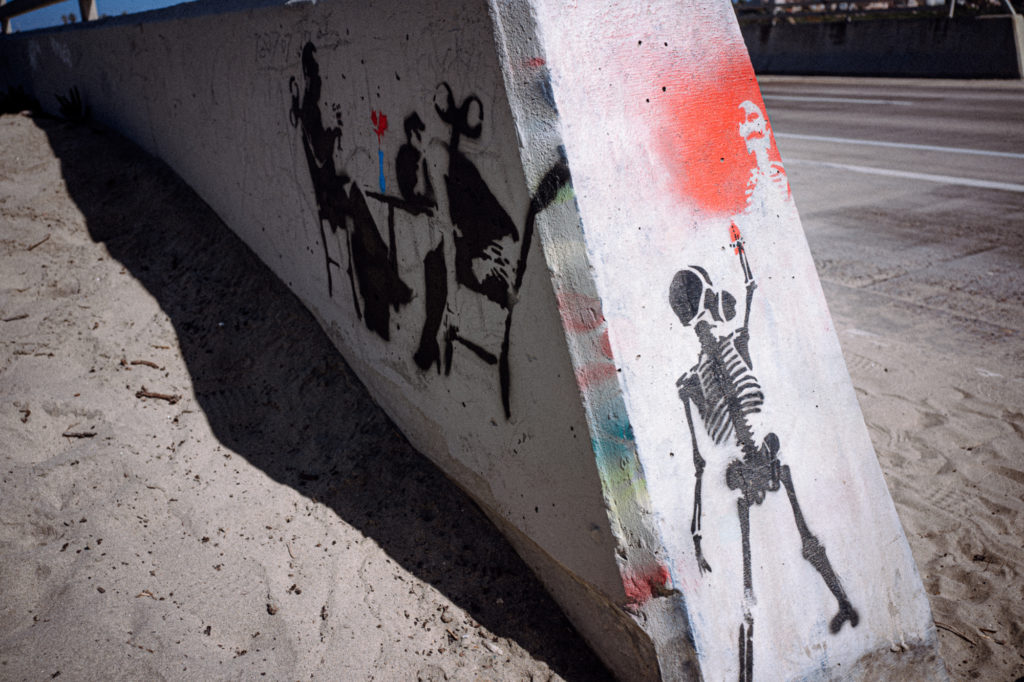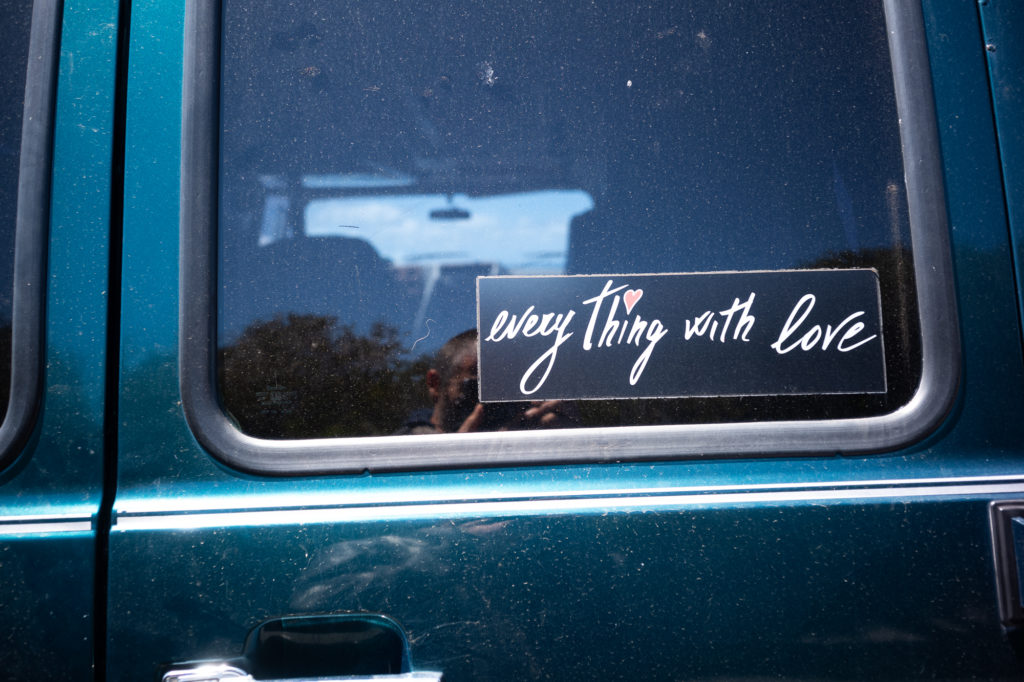There isn’t much written about the history of this lens since it was a one and done by Ricoh. The best summary of the collective knowledge about the history of this lens can be gleaned on the Japan Camera Hunter website.
The Ricoh GR point and shoot camera was hot stuff in the mid-1990’s, in part, because of Daido Moriyama (1). In 1997, a decision was made to extract the Ricoh GR 28mm lens from the Ricoh GR film camera and add an L39 mount. As you will soon see, this lens vignettes significantly on a film rangefinder when shot at infinity which, as best as I can tell, is not a feature of any GR image I have ever seen. This leads me to wonder what exactly was going on at Ricoh in 1997, why exactly did they stop making the lens after only 3000 units, and why did Ricoh abandon any further production of rangefinder lenses? I was interested enough in these questions that I contacted Ricoh about the real history of what happened with the Ricoh GR LTM lenses.
When I contacted Ricoh (2), I mostly wanted to know is if the legend that this is the “exact same” lens from the Ricoh GR camera is 100% true? I mean… did they have to adjust anything to give it a rangefinder mount or is it just a lens with a similar lens diagram? Perhaps it really is the exact same lens and when they saw the performance on a rangefinder, one engineer said to another engineer “Look, we keep going over this again and again. I know it doesn’t work 100% on that Leica. Get out of my office. These Leica people want to be like Moriyama so bad they will tolerate the corners. Trust me. Ship it. Stick it in a red satin-lined box. They will buy anything!!!!”
It is unlikely that I will ever know for sure. Ricoh said that they have no historians on staff and, at the time of writing in 2021, nobody there was able to recount what happened back in 1997. Whatever did happen, at least for me, the take-home message is that transplanting a lens from one platform into another platform it wasn’t designed for might be more complicated than it sounds. Perhaps it is like taking a kidney out of one cat and sticking it in another. Transplanted cat kidneys function mostly the same – at least if you can ignore the immunosuppressive drugs needed to keep them going.
Then again, maybe things like this are just what you accept when you enter a cult.
On garden gnomes and parked cars
After a long year cooped up, running scared from Covid, and spending too much time online, my vocabulary has degraded to the point that I sound like a millennial writing clickbait titles for Buzzfeed. As I write this I am finding myself using terms like “drool-worthy,” or “the GOAT.” I am certain that I became stupider during the pandemic as I find that I am having a difficult time expressing the joy I get from using this lens without sounding like an imbecile. Knowing full well I am about to sound like an imbecile, I unironically offer you the following….
The Ricoh GR 28mm f/2.8 lens is drool-worthy.
This lens is a perfect size. It has perfectly sized aperture control wings that click perfectly. The perfectly shaped lens tab works with the perfect amount of dampening. I don’t comment on build quality but if I was dumb enough to mistake “heavy for weight” for someone knowledgeable about build quality, I would say the build quality is the GOAT.
The last time I offered you imbecilic drool about a lens package, was for the lens hood on the Summarit 2.4 lenses. Ricoh didn’t get that lens hood memo. The Ricoh GR 28 lens hood appears to have been modeled after the “cone of shame” your dog gets to wear after they ingest underwear, tampons, tennis balls, fishing hooks, or corn cobs. All of which invariably require surgical removal (3). The lens hood that comes with this lens is large (which is not surprising with a 28mm lens) but it is an annoyance. I don’t generally complain about viewfinder blockage but with the 28mm focal length, having a lens hood cut off the bottom right of the viewfinder gives rangefinder haters something to talk about. It is not a deal-breaker but it is worth taking note of. Moreover, you might not actually need the hood. This lens does an excellent job of flare resistance without the hood.
In an effort to find a smaller replacement, I went through a few cheap lens hood alternatives and after the second, I was getting progressively more frustrated because every hood I used seemed to cause at least some vignetting in the image. After several, in a flash of brilliance, I put back on the original hood and realized the hood wasn’t the issue…..
Does it have SOUL?
The Ricoh GR 28mm f/2.8 is known as a cult lens. This is interesting because joining a cult as an adult is generally a bad thing (I am talking to you NXIVM). Conversely, with movies, books, and apparently rangefinder lenses, obtaining cult status is considered drool-worthy.
During my 5 decades on this earth, I managed to avoid joining a cult. During the last 3 of those 5 decades, I often champion the theory that cult books and movies like Naked Lunch, Eraserhead, and The Rocky Horror Picture Show, by virtue of the fact that they are unreadable and unwatchable (not to mention the fact that I don’t dress up at midnight and do singalongs), are a long con or some sort of extended inside joke on the rest of us.
My theory is that people who say they like those books and movies know full and well that these cultural tidbits are the equivalent of literary and cinematic anal glands but they tell other people that they like them as a way to signal that they are in the club, deep, dark, and intellectual.
Whatever it is that I don’t understand about cults, I found myself in possession of a cult lens. Truth be told, I obtained this lens out of desperation. In the early months of 2021, the price of rangefinder lenses went insane and there were very few 28mm lenses that fit into the LLFNP price range and purchasing criteria. As a fan of Moriyama, and with few other options, I entered the cult knowing full well what I was getting myself into.
After I fell in love with the drool-worthy external package (honestly the handling and size are epic – see previous drool) I was surprised when I found that this lens vignettes so strongly in the corners when shot anywhere toward infinity on film (Leica M7) and a Panasonic S1 with the Kolari thin sensor conversion. This type of vignette is so strong and so angular in some cases, it can be difficult to manage in post.
You can see this in many of the images below. Here is an example.
 I find this interesting because nobody ever refers to the Ricoh GR 28mm LTM as the cult lens that vignettes strongly at the corners at infinity. Nobody says that anywhere. Cults leaders always seem not to be infallible. Cult members always seem to protect their leaders.
I find this interesting because nobody ever refers to the Ricoh GR 28mm LTM as the cult lens that vignettes strongly at the corners at infinity. Nobody says that anywhere. Cults leaders always seem not to be infallible. Cult members always seem to protect their leaders.
Barring use at infinity, ON FILM, this lens has that type of cult-ridden SOUL that makes you feel like you are using something special. It isn’t criminally sharp but I have absolutely no need or want for anything sharper in this lifetime. It isn’t the most contrasty or least contrasty. It is just creamy greatness that defines exactly what someone like me is looking for when they look for SOUL. The images are, like the package, perfect…but not at infinity.
It is hard to fault legacy lenses on a digital rangefinder. Nonetheless, on a digital Leica (m10) things simultaneously get worse and better. The strong vignetting I saw on film and the Panasonic S1 is tempered. The vignetting is still present but for me, this level of vignetting is acceptable (see the surfer girl sign below). Others would most certainly disagree. What is probably more disagreeable is that, on the Leica m10, there is red disease on the right side of the image. The red disease is of lesser severity than I saw with the Voigtlander 25mm Color Skopar. This amount of red disease even gets lost in some images and actually didn’t notice it immediately. It is, nonetheless, omnipresent. Red disease, is potentially manageable in post but, as they say at goat auctions, do you really want to buy your problems? Here are two examples. Look at the right side of the image in the sand and the sidewalk.


I am at a loss to explain why this lens vignettes in the same way on my film Leica M7 as it does on my Panasonic S1 but less so on my Leica m10. I am, however, electing to leave that mystery for people smarter than I am or have more time to concern themselves with these issues. It is what it is and in the end, does it really matter why?
So the question remains “does it have SOUL?” The short answer is yes. The slightly longer answer is that if James Brown can retain his title as “The Godfather of Soul” even though he had issues with drugs, crime, and assaulting people, then this lens can do the same despite its vignetting and red disease.
So did I keep it?
Because of the package, I might be willing to forego the foibles of this Ricoh GR lens and keep it around for film. Conversely, I am not a lens collector so that decision may ultimately be determined to be a transgression. To find out which 28mm lenses I kept and which I sold, which lenses I recommend to my friends and family, please visit the Leica Lenses for Normal People: Recommended List.
References:
1. If you are not familiar with Moriyama, he is an interesting character and it might be worth your time to see a few YouTube videos of DM shooting his impossibly small cameras on the streets of Tokyo, You won’t be able to unsee them and, I can almost guarantee, that from here on out Ricoh GR will become synonymous with Daido Moriyama. It is for me anyway.
2. Ricoh, to their credit, responded back immediately which is very much appreciated. I also asked them what the GR means in Ricoh GR. GR is apparently the heart of the “photo-GR-apher.” I am undecided as to whether that is genius or just silly.
3. Dogs eat a lot of things. That is my top 5 list of items that will invariably require surgical removal. In cats, it is earplugs, string, and hair bands. Cats love hair bands.
Sample images (film images have black borders)




















